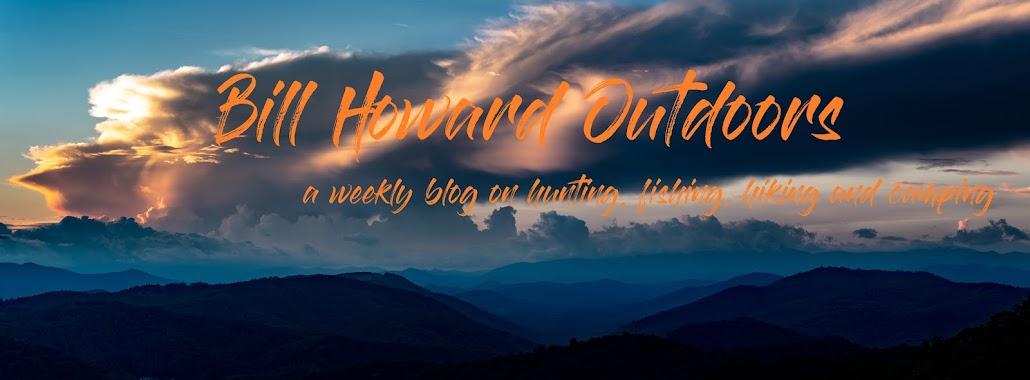My nephew loves asking questions. He especially loves asking
advice and questions about hunting and fishing. Recently we had a conversation
about climbing stands. You see, deer season is upon us, and if you bowhunt, you
are using stands now, and if you gun hunt, you will be very soon. The best
stand depends on how you plan on using it.
There are five basic types of hunting stands. They are the
box stand, the tripod stand, the ladder stand, the climbing stand, and the
lock-on stand. There are also variations of each, but we will stick with the
five main types.
Both the box stand and tripod stand are free-standing types
of stands. This means they can go up in the middle of a field away from trees
or some other type of structure as they support themselves. They can be used in
the open as mentioned, or they can be placed on the edge of a woodline for
additional cover.
The box stand is essentially a small room supported off the
ground by four or more legs. Basic box stands may just be a platform and a
railing or four small walls. However, there are more elaborate box stands that
can hold multiple people, have windows and doors, ventilation and I have even
seen one with an air conditioner installed.
Box stands allow more movement inside as long as you can
remain quiet, as the walls provide sight protection. They are wonderful for gun
hunting and can even be used effectively with crossbows. They are also great
for taking a new or young hunter as two or more people can hunt together.
Because of height restrictions on many box stands, as well as difficult angles
for downward shooting for deer, or bear even, that are close to the stand,
bowhunting is much more difficult.
Tripod stands are similar to box stands in that they are
self-supporting. A tripod is exactly what it sounds like. Three legs hold up a
small platform, usually large enough for one person. There are usually rungs on
one of the legs that act as a ladder for access to the top of the tripod stand.
Because the tripod is less sturdy than a structure with four or more supporting
legs, there is often a safety cable that comes straight down from the platform
and attached to a ground embedded hook to assist with a firm sturdy support.
Tripod stands work well with gun hunting and crossbows,
however depending on the size of the platform crossbows can be a challenge to
cock. Tripod stands are usually built for only one person.
The ladder stand is essentially a ladder with a flat
platform in which to sit. The ladder stand must be leaning against some type of
structure which usually is a tree. The platform is fastened to the tree via a
cable or chain that goes around the tree. Midway or lower there is an extension
arm that also goes against the tree and another cable or chain is used to wrap
around the tree to keep it taught.
There are ladder stands that allow for more than one hunter,
but seldom more than two hunters. They can effectively be used while hunting
with firearms or bows, and crossbows can be used as well if the crossbow is
cocked prior to climbing the ladder stand.
Because ladder stands are attached to trees, they are
popular for both woodlined fields or inside the woods near natural animal
crossings and paths.
The climbing stand is one of the more difficult stands to
master. It consists of two parts; a seat and a foot platform. A climbing stand
requires a straight tree with no limbs up to the height desired. Climbing works
by grasping the seat part while standing on the foot platform and raising it up
the tree a few feet then sitting and clutching the foot platform with your feet
and raising it a few feet. You continue to shimmey up the tree to the desired
height. Things to be careful with a climbing stand include knowing the diameter
of the tree is smaller at heights than at the base, the bark on the tree may
give way causing a slide down, and always keep the foot platform attached to
the sitting platform in some way so if you lose grip of the bottom it doesn’t
get away from you.
Many climbing stands allow you to sit both facing the tree
or away from the tree as well. Usually for gun hunters or crossbows sitting
with your back to the tree is ideal. I personally like facing the tree when
bowhunting as it provides cover between me and the deer in order to draw. And
advantage of the climbing stand is it goes with you when you leave.
The last type is the lock-on stand. This is a single
platform for one person that is strapped to a tree by cable or chain at the
desired height. Usually climbing sticks are used to access the stand which is a
type of ladder that is strapped up against the tree. If offers very little
movement and can be attached for the season or taken with you. Both the
climbing stand and lock-on stand are popular for hunters in public lands.
Choosing the right stand all depends on how you intend to hunt
and where. All the types of stands require safety precautions as falling from a
stand is the top danger for a hunter each year.

